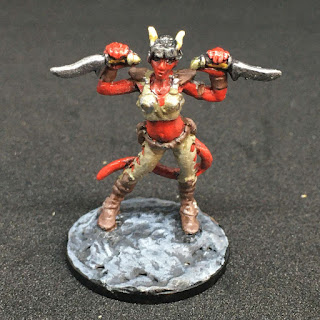As some of you are aware I am based in the UK and
I've blogged before about how the roleplaying scene differs in Blighty to that across the pond (and probably that over in the Eurozone to boot). Here's an attempt to pick out some of the highlights of what it was like to be a roleplayer back in the dark days of Thatcher's Britain of the 1980s (cue the V for Vendetta trailer)...
In 1988 R Talsorian released Cyberpunk, set in the dystopian near future imagined by the likes of authors William Gibson (Neuromancer), Bruce Sterling (Mirror Shades) and Walter J Williams (Hardwired).
Designer Mike Pondsmith did a great job of amalgamating the disparate source material into one and with the release of CP2020 in 1990 the game really took off. I was one of the early adopters of the original boxed set. It could usually be found languishing at the back of the dark and dingy gamestore (trust me some were) among the
RIFTS and
Teenage Mutant Ninja Turtles books. The black box set had minimal artwork just a cool looking negative line drawing of a punk with a big gun... I had to have it.
The three skinny books were:
- View From The Edge: The Cyberpunk Handbook (48 pages) - The "Players Handbook" if you will, detailing character generation, the net and netrunning and cyberwear.
- Friday Night Firefight: INTERLOCK Man to Man & Weapons Combat System (22 pages) - The combat manual containing all you needed to know about melee and missile combat, wounds damage and recovery and a whole heap of guns and armour.
- Welcome to Night City: A Sourcebook for 2013 (44 pages) - The dark future sourcebook containing all you needed to know about Night City (the primary urban setting) and the rest of the world including, corporations, fashion, weapons and transportation.
Now don't get me wrong I absolutely love Cyberpunk, but if it were released today no-one in their right mind would buy it, but not because there's no market or appetite for a dystopian near future subculture game. Compared to todays slickly produced, source material heavy books, its just a skeleton of a game system really, there just wasn't enough source material in there for you to run a convincing game. This is probably why only two years later it was completely revamped and flung another 7 years into the future with Cyberpunk 2020, and to be honest this is the game I play, even now.
No Source Material, I'll give you Source Material
It wasn't until you teamed up the boxset rules with one of the sourcebooks published the year after the original release, that the game came together.
- Hardwired - An alternate reality sourcebook set in the world of Walter Jon Williams 1986 novel of the same name.
- Near Orbit - Focusing on the corporate expansion into space and it's exploitation in the wake of nation state collapse and the failure of US and Russian space programmes.
- Rockerboy - Expanding upon the Rockerboy character role from the basic game.
- Solo of Fortune - Expanding upon the Solo character role from the basic game.
Time for Predictions
Cyberpunk has taken quite a lot of flack in the post internet years for its lack of foresight, but I think that this is unfair criticism, infact William Gibson said "As soon as a work is complete, it will begin to acquire a patina of anachronism." in his
recent interview with BoingBoing. There are plenty of games and a whole genre of science fiction which has done the same whilst trying to imagine a vision of a dystopian near future. You only have to look at Bladerunner's vision of 2006 or Mad Max's vision of an Australia after a Third World War to see that others also got the future spectacularly wrong.
Let's dig a little deeper into that source material and see whether or not any of the ideas and concepts from the game and genre actually came true.
Global Data Network - ARPANET had been around since 1972 and a lucky few may have been on BBS or USENET on a computer via a modem and the game acknowledges that history. But in 1988, when cyberpunk was released, Tim Bernes-Lee hadn't yet invented The Internet and no-one knew what a browser was, so instead we had this bizarre virtual reality construct which you interfaced with. This came straight off the pages of the novels which inspired the game (and I noted with interest that Walter Jon Williams is credited with playtesting the game). The global data network which we now call the internet did arrive and thank god it was not entirely dominated by the corporations although we did have the likes of AOL and GeoCities.
8/10 - "Not Far off"
Virtual Reality - The interface of the dark future was direct injection, without the 2D visual interface of a monitor to hold them back, the aspiring netrunner went all 3D virtual reality on us. This vision of the future is still some years away, and it is now the movie and games industries which are driving the development of 3D technology and it is only a matter of time until the web and 3D merge. The advances in mobile computing and telecoms have spawned another potentially far more interesting technology which Cyberpunk did predict in the shape of Times Square Marquee, a form of Augmented Reality (AR) where a virtual layer is superimposed on the realworld.
5/10 - "Still waiting for my neural plugs"
Aerodyne Vehicles - The transport of choice in Night City was always an AV of some sort or another and thanks to the relentless self publicity of Dr Moller and his Sky Car this has always seemed so tantalisingly close. Cyberpunk is in good company when it comes to flying cars alongside many futurists, tech journalists and sci-fi authors but sadly this is still just a dream -
3/10 - "Dude Where's my flying car??"
Cybernetic Enhancements - Putting the cyber into cyberpunk were the mechanical and neural enhancements you added to your characters just to let them get through a tough day in Night City. Everyone had them, from rockerboys to cops, and street vendors to corporate execs, so where are they? A little ways off it seems, the plastic surgery and body sculpting fetishes are most definitely with us but those spearheading the field of limb and organ replacement are still the same war veterans and disabled of 50 years ago. Although advances in material science have given us the likes of athlete Oscar "Bladerunner" Pistorius and in cybernetics, Prof. Kevin " Captain Cyborg" Warwick the world has yet to turn to the elective surgery seen in the game.
2/10 - "Still just plain punks"
Rise of the Mega-Corporation - Another dark them in the game was that of the collapse of nation states and their replacement by Mega-Corporations. There are undoubtedly dark times ahead still for the world as it blunders its way through this latest global recession and todays corporations seem to be lacking in their resolve to take over everything just yet.
5/10 - "There's still time for this one"
Mobile Computers - No self respecting Netrunner would have been seen dead without his portable deck and trodes ready to jack in from a public data term, a household line or a dead suit's deskphone in Arasaka Towers. However, the rise of the internet and the desire for mobile data all the time has led to the invention of the smartphone instead. The mini wifi terminal most of us now carry in a shirt pocket or handbag, capable of handling data, voice and video was not on cyberpunk's or any other tech radar. Need proof? just check out Harrison Ford in 1980s "Bladerunner" making a video call to Sean Young from a public phone booth.
2/10 - "The future's now, the future's iPhone"
Addendum
Most of this post was written many years ago and was languishing as a draft utnil very recently. We are all on tenderhooks waiting for the full edition of
Cyberpunk Red to be released and I for one am glad that Cyberpunk is gettting the love now that it deserves.





































